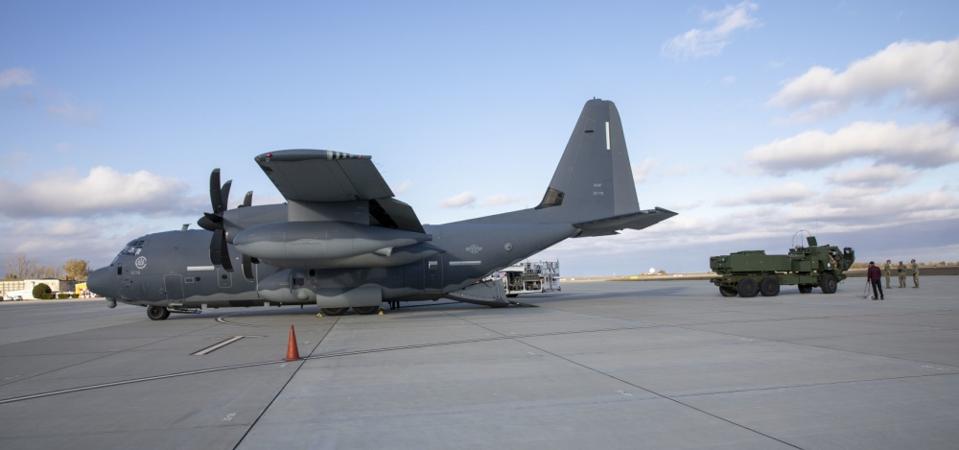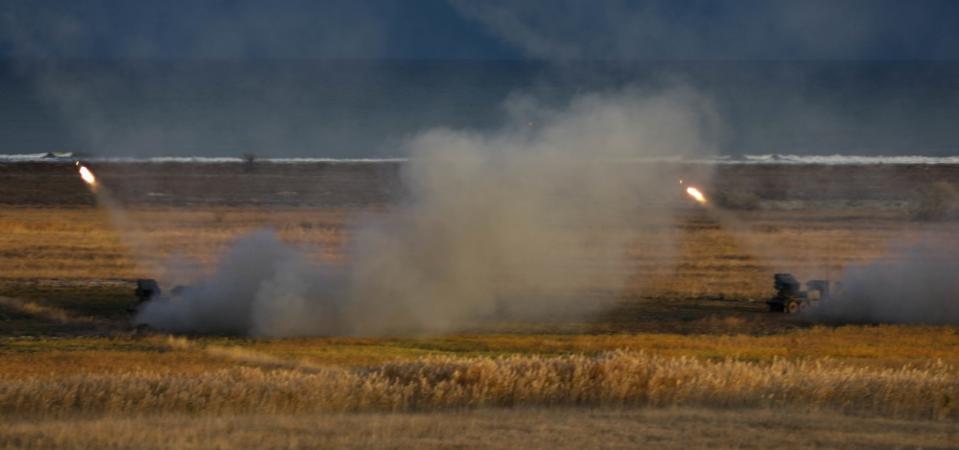David Axe

The U.S. Army sneaked a pair of long-range rocket launchers near Russia’s Black Sea outpost on Thursday, fired off a few rockets then hurried the launchers back to the safety of their base in Germany. All within a few hours.
The one-day mission by the Army’s new Europe-based artillery brigade was practice for high-tech warfare. It clearly also was a message for Moscow. The U.S. Army in Europe has restored its long-range firepower. And it wants the Russians to know.
The Nov. 19 mission began at Ramstein air base in Germany. Soldiers from 1st Battalion, 77th Field Artillery Regiment, 41st Field Artillery Brigade loaded two wheeled High-Mobility Artillery Rocket Systems, each with three crew, onto U.S. Air Force MC-130J transports.
The C-130s flew the HIMARS to Romania. The crews unloaded, set up at a Romanian training range, fired rockets into the Black Sea, then drove back to the airfield, loaded back onto the C-130s and flew home to Germany.
The Army—and U.S. Marine Corps, which shares the capability—calls these missions “HIMARS Rapid Infiltrations,” or HIRAINs. They’re a cornerstone capability of the ground-combat branch’s new approach to heavy firepower. Instead of deploying slowly by road or rail, rocket-launchers now can deploy quickly by air. That means they can show up almost anywhere there’s a nearby airfield.
The sheer speed of these aerial deployments helps to complicate the enemy’s counter-battery fire. It’s tough to target a rocket launcher that spends just a few hours on the ground near your own forces.
The Thursday exercise represents a major turnaround for U.S. Army forces in Europe. The Army for decades kept rocket-launchers in Europe. The last tracked Multiple-Launch Rocket Systems departed in 2006 as the Pentagon focused its resources on the wars in Iraq and Afghanistan.

Two Romanian rocket-launchers fire rockets into the Black Sea during Exercise Rapid Falcon on Nov. ... [+] U.S. ARMY PHOTO BY SGT. H. MARCUS MCGILL
Russia’s invasion of Ukraine’s Crimean Peninsula in 2014 changed the Army’s priorities. The Black Sea fast was becoming a Russian lake. In a bid to deter further aggression, the Army sent the 41st Field Artillery Brigade back to Germany in late 2018.
Today the brigade has four batteries, each with around nine launchers. At least one of the batteries possesses the wheeled HIMARS instead of the heaver, tracked MLRS.
The 12-ton HIMARS carries six 270-millimeter rockets that can travel as far as 40 miles or a single Army Tactical Missile System with a 100-mile range. The 26-ton MLRS has double the capacity. HIMARS might pack less firepower than an MLRS does, but it has the advantage of being light enough for even a propeller-driven C-130 to haul.
The 41st FAB trained in Germany for a year then deployed to Estonia for its first major live-fire exercise. Russia was displeased. “A rhetorical question is — how would the Americans react in the event of such shooting by our military at the U.S. border?” the Russian foreign ministry stated.
“Russia’s criticism of the exercise shows that our eastern neighbor is following the exercise very closely,” Estonian defense minister Jueri Luik said.
The brigade’s rapid deployment to Romania last week could prove even more provocative. Especially considering the new munitions the Army is developing for the HIMARS and MLRS. These include an anti-ship missile and a replacement for ATACMS that can travel as far as 310 miles.
It’s just 250 miles across the Black Sea from the Romanian coast to Crimea. Army HIMARS flying in and out of Romania pose a serious, and unpredictable, threat to Russian forces in the region.
No comments:
Post a Comment